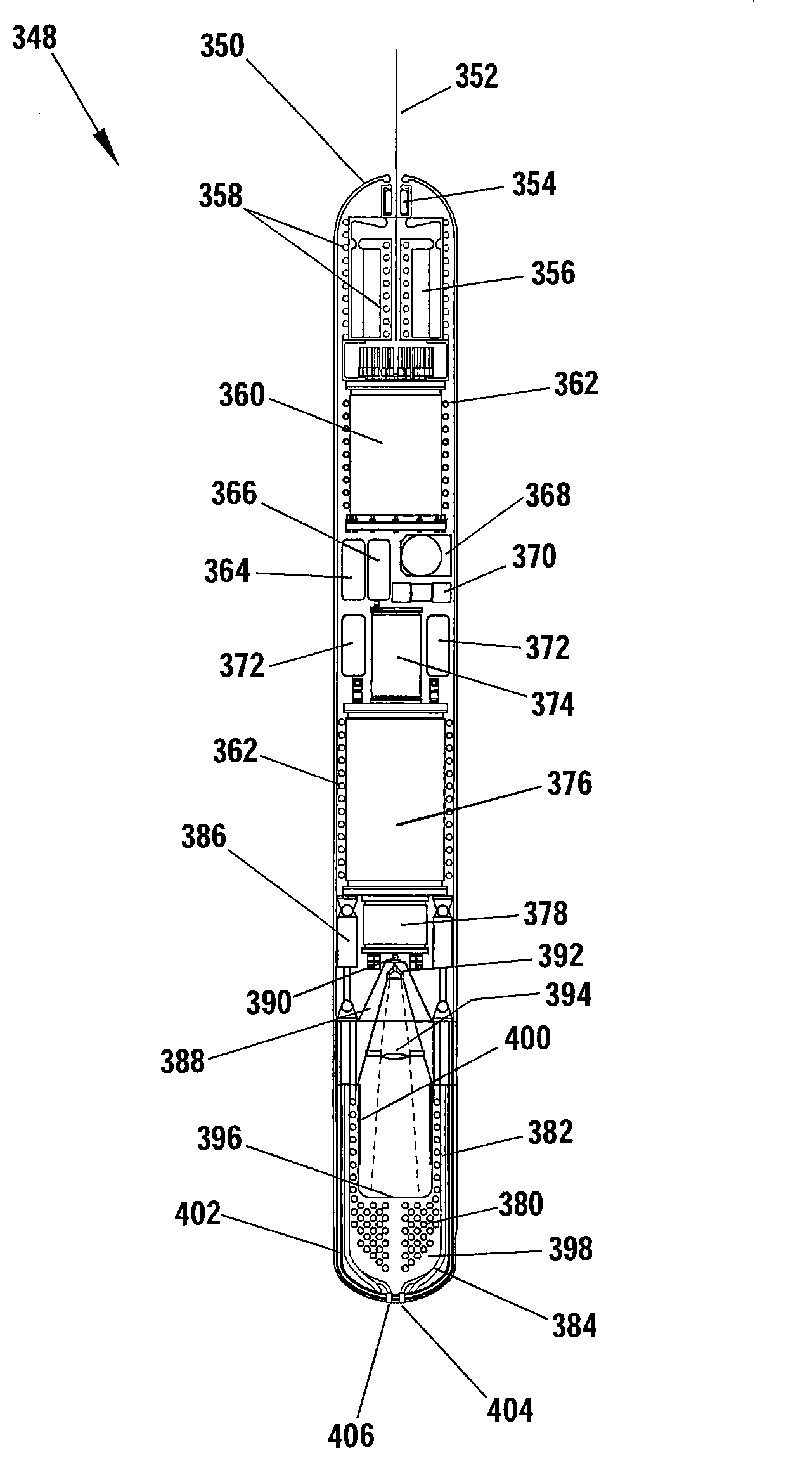Optical energy transfer and conversion system
a technology applied in the field of power systems, can solve the problems of limiting the actual power delivery of fiber to four or five megawatts, and affecting the efficiency of optical energy transfer and conversion system,
- Summary
- Abstract
- Description
- Claims
- Application Information
AI Technical Summary
Benefits of technology
Problems solved by technology
Method used
Image
Examples
Embodiment Construction
[0055]Referring to FIG. 4, in the present invention, the length of the output fiber 34 is desirably a long distance—from a few kilometers to upwards of one hundred kilometers or more—and used for the purpose of providing, specifically, optical energy to a remote system 36 that consumes the power in a variety of ways for the purposes of mobility, propulsion, raw thermal power utilization, electrical power conversion, mechanical power extraction or for the purpose of using the laser energy itself in a focused beam.
[0056]Referring now to FIG. 4 and FIG. 5A, one could conceive of setting up such a system whereby a truck is used to lay fiber 34 from the plant-based (fixed) fiber laser system 16 to a fixed actuator 36 that uses the energy at some significant distance from the laser source 22. In general, this will have very limited utility because it would be, under most conditions, equally possible to use a local power source at the location of the remote system 36 and not pay the price ...
PUM
 Login to View More
Login to View More Abstract
Description
Claims
Application Information
 Login to View More
Login to View More - R&D
- Intellectual Property
- Life Sciences
- Materials
- Tech Scout
- Unparalleled Data Quality
- Higher Quality Content
- 60% Fewer Hallucinations
Browse by: Latest US Patents, China's latest patents, Technical Efficacy Thesaurus, Application Domain, Technology Topic, Popular Technical Reports.
© 2025 PatSnap. All rights reserved.Legal|Privacy policy|Modern Slavery Act Transparency Statement|Sitemap|About US| Contact US: help@patsnap.com



